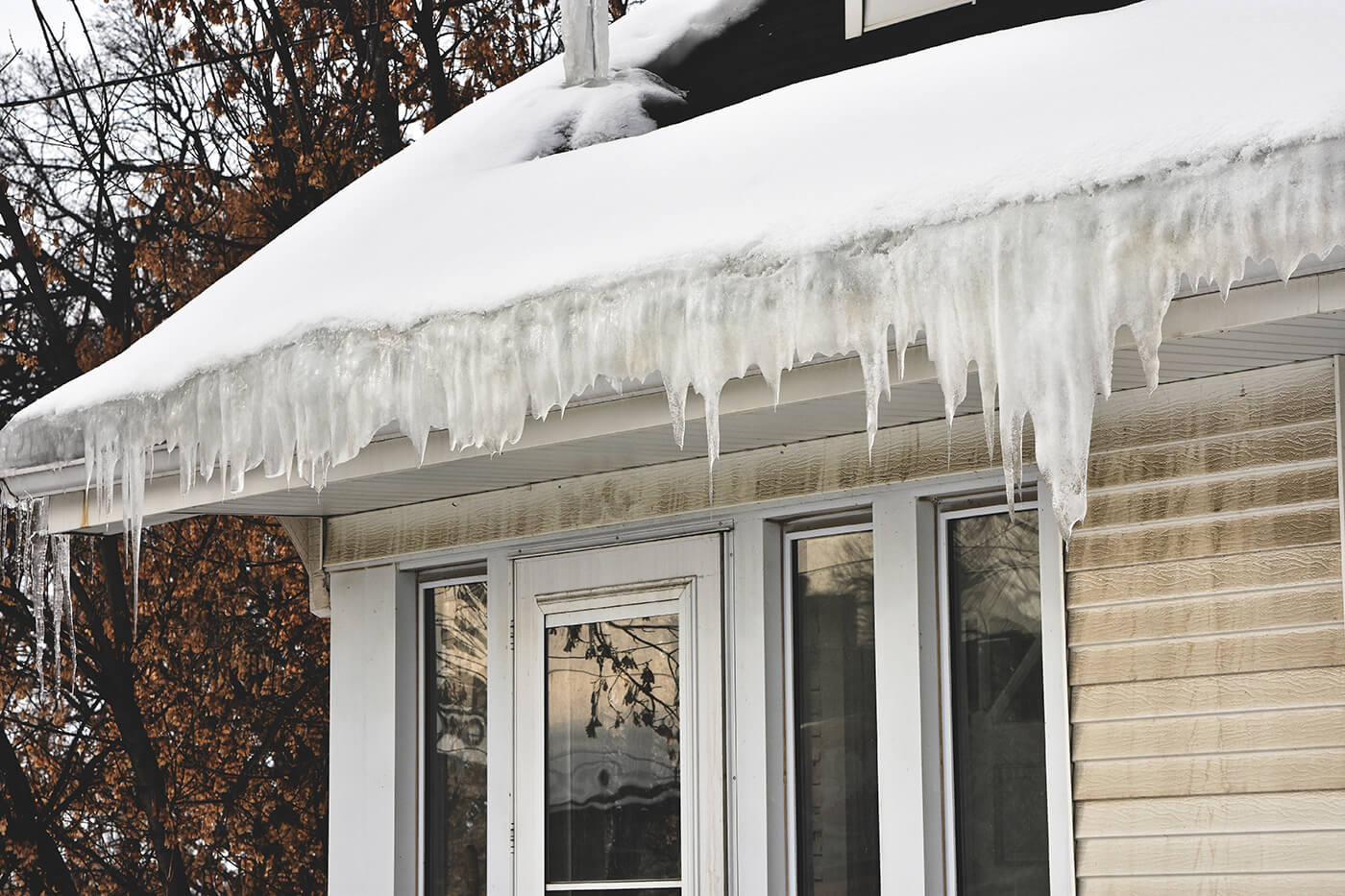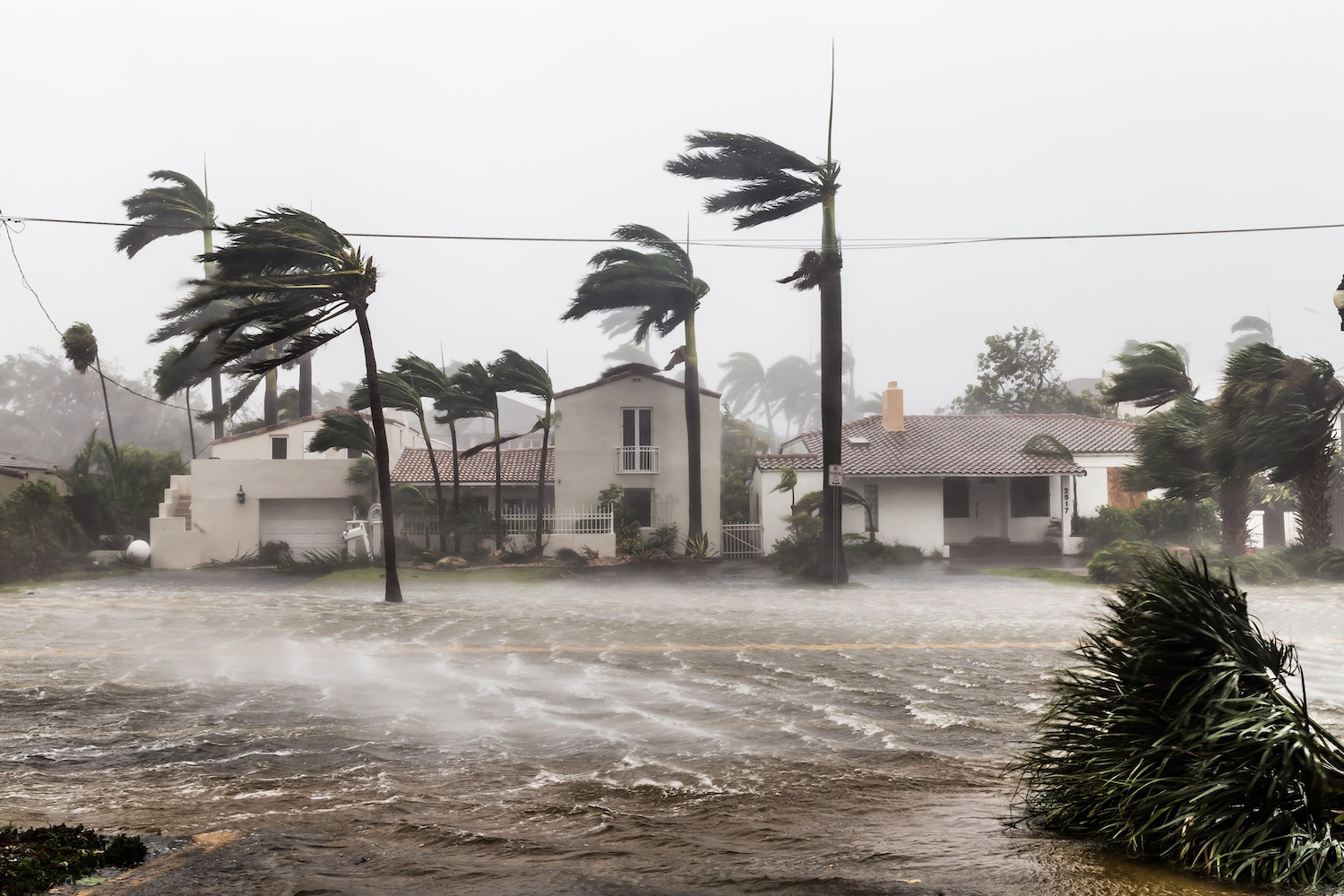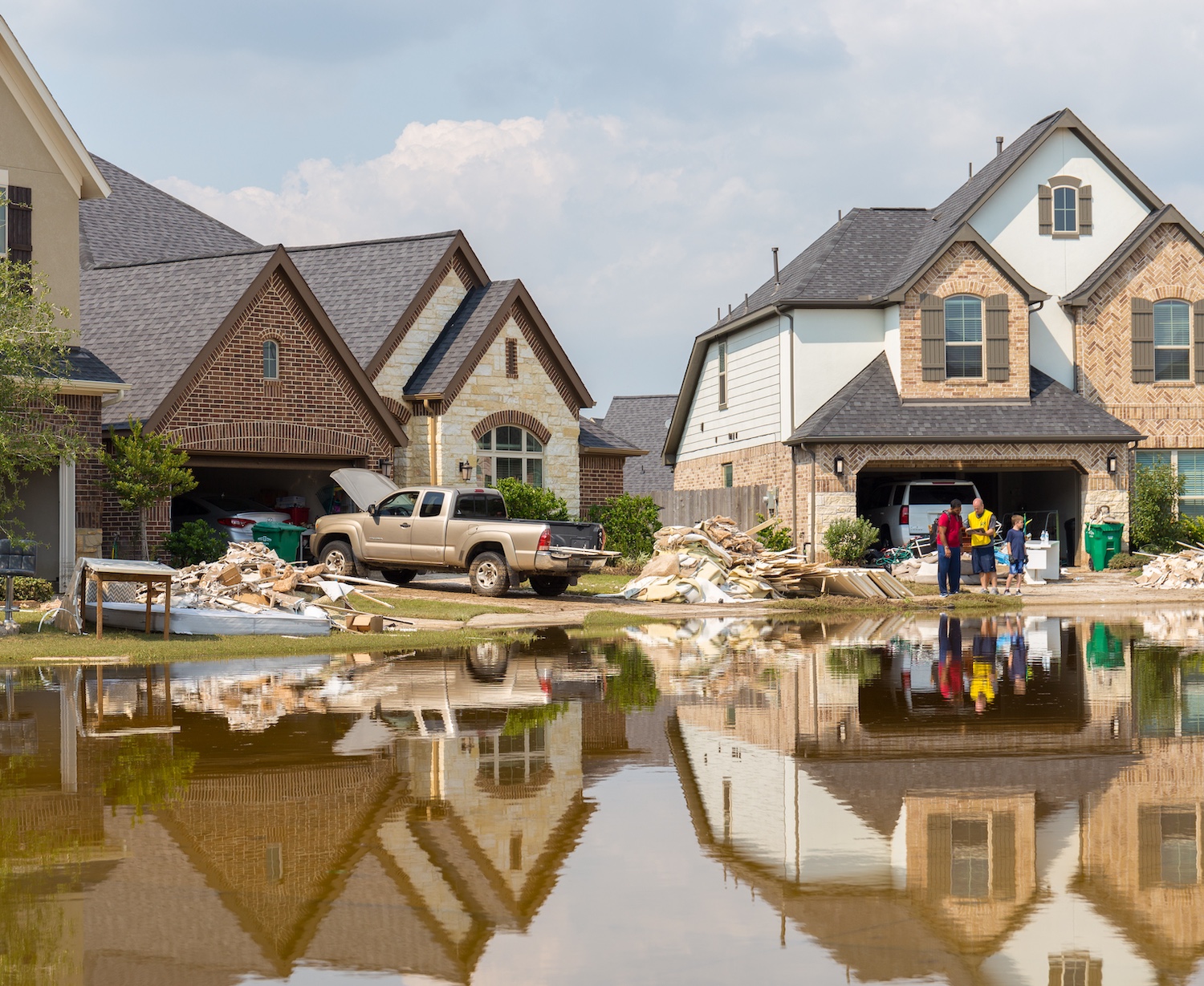Water damage can happen all year round. It can damage your home or business, destroying carpets, warping walls, and ruining cabinets. Many are surprised to learn that water damage can occur during the cold winter months of the year. Freezing temperatures and extreme snowfall that cause damage to HVAC equipment can leave you dealing with a serious water mess if you do not prepare in advance.
Frozen Pipes
The last thing a homeowner wants to see when they return from a vacation during the winter is icicles forming underneath their siding. If there are icicles outside the house and frosted windows from moisture, there is an issue inside the home, possibly burst frozen pipes.
In homes with water pipes along exterior walls, subzero temperatures make them vulnerable. Burst frozen pipes can cause immediate water damage in the area where the pipe bursts. If not promptly addressed, water can drip down into the lower levels, resulting in extensive damage.
The longer the burst pipe is allowed to leak, the more secondary damage is experienced in the house due to moisture. The constant flow of water increases the moisture levels throughout the house. When that moisture comes into contact with exterior walls, windows, and doors, it freezes. This can damage drywall and joints. If not addressed, prolonged water damage can lead to serious mold growth.
The Cleanup Process
The cleanup process following a burst water pipe can be extensive. It begins with plumbers stopping the flow of water from the main valve and fixing the pipe. Other pipes in the home will need to be inspected to ensure they are not damaged before turning the water back on. The cleaning process will include using multiple fans and dehumidifiers to reduce moisture content.
If water flowed for an extended period, leading to areas like basements being permeated, mold growth might begin. This necessitates mold remediation, including addressing impacted areas like sheetrock, ceiling tiles, and soft contents like carpeting. Non-removable objects like concrete will require mold treatment. After cleanup and mold remediation, efforts will be made to restore the home to its previous condition.
Preventing Frozen Pipes
Taking simple, inexpensive steps can prevent water damage from frozen pipes. For example, maintain the heat when expecting cold weather and being away from home. A programmable thermostat can be set to ensure the building’s overall temperature is warm enough to prevent pipe freezing.
Another tip is to allow the faucet to drip, ensuring a flow of water runs through the pipes and preventing freezing. Adding insulation to walls or pipes can help prevent freezing. Simply opening cabinet doors where pipes are located allows warm air from the house to reach the pipes, keeping them warm.
Leaking Water Heater
Water heaters ensure a steady supply of hot water for showering, cleaning, and other household activities during winter, making them invaluable tools. Despite being designed for durability, water heaters are susceptible to leaks that can result in significant water damage.
Tank-style water heaters, particularly those exceeding 15 years of age, are prone to leaks. As the system ages, its components break down and cause leaks due to corroded pipes and deterioration within the tank.
If a water heater leak is observed at the bottom of the tank, it may indicate an issue with the drain valve. Immediate action is necessary when a water heater leak is detected. Power should be promptly turned off, and professionals should be contacted for repairs. Failure to do so can lead to further damage to the water heater and moisture damage in the basement, resulting in mold growth and a loss of hot water.
Water heater leaks can cause substantial damage, often exacerbated by the fact that most individuals don’t inspect their water heater until a problem arises, such as a lack of hot water for showers. A leak from a water heater can result in thousands of dollars of damage to a home. If this occurs during an absence, it could mean a 40-gallon tank flooding the basement.
Regular maintenance is crucial to preventing water damage from a water heater. This involves professional servicing, annual flushing, and cleaning of the burner assembly at least once every four years. For older, tank-style water heaters, consulting plumbing professionals about upgrading to a tankless water heater is advisable, as it is less likely to encounter issues and comes with features to protect your home in case of a problem.
Melting Snow
After a cold winter, the warmth of spring offers a welcome change. While it is nice to see the snow melting away, it’s important to remember that melting snow means an increased risk of water damage.
Warmer weather can lead to the snow on the roof melting, increasing the chance of water infiltration. If there are more than 20 inches of compacted snow or nine inches of snow and ice on your roof, it is time to remove it.
Ensure your home’s drainage systems are free of debris to allow proper water flow. Check that gutters and drain mouths remain unblocked by accumulated ice, snow, or other debris. Safely remove any obstructions. In the case of a flat roof, hire a qualified professional to clear any accumulation and prevent damage.
After the snow has melted and been cleared from your roof, it’s essential to have it assessed for signs of wear and aging. Look for damaged roofing material, missing or loose shingles, buckling, damaged flashing, or issues around satellite dishes or other equipment mounted on your roof. These can all serve as points for water infiltration.
During spring, diligently inspect the foundation around your house to identify any problems and proactively prevent water damage. Conduct inspections from both inside and outside the house. If you notice any cracks, seek professional repairs promptly. Failure to do so can result in these cracks becoming sources of water infiltration as the snow melts.
Ice Dams
Ice dams, the blocks of ice forming along the edge of your roof, pose significant damage if not promptly addressed. They occur when a section of the roof heats up above freezing, typically at the roof’s tip, and causes snow to melt. The melted snow travels down to the colder edges of the roof and refreezes, forming ice dams. The greater the amount of snow on the roof, the higher the risk of ice dams due to increased melting.
The ice dam grows as it is fueled by the melted snow from above. Eventually, it reaches a point where water collects on parts of the roof above 32°F. In this scenario, the water remains in a liquid state. It seeks out cracks and openings in the roof covering’s exterior, flowing into the attic. From the attic, it can infiltrate exterior walls, travel through the ceiling and insulation, and cause staining on the walls and roof.
High-Quality Mold Remediation and Sanitization Services
At Pur360, we are committed to providing outstanding mold remediation, sanitization services, and testing. We know that it can be stressful cleaning up after a water disaster. Whether it’s a flood, burst pipe, or humidity, our locally owned and operated company has been helping individuals with mold remediation since 2006. We are a top-rated company with an A+ rating with the Better Business Bureau.
Our services include mold eradication, indoor air quality, odor removal, sanitization, water damage restoration, air purification, and cigarette smoke removal. We strive to remove the stress that can come with dealing with mold in your home. Contact Pur360 today and see why you can rely on us to handle your water damage needs.



